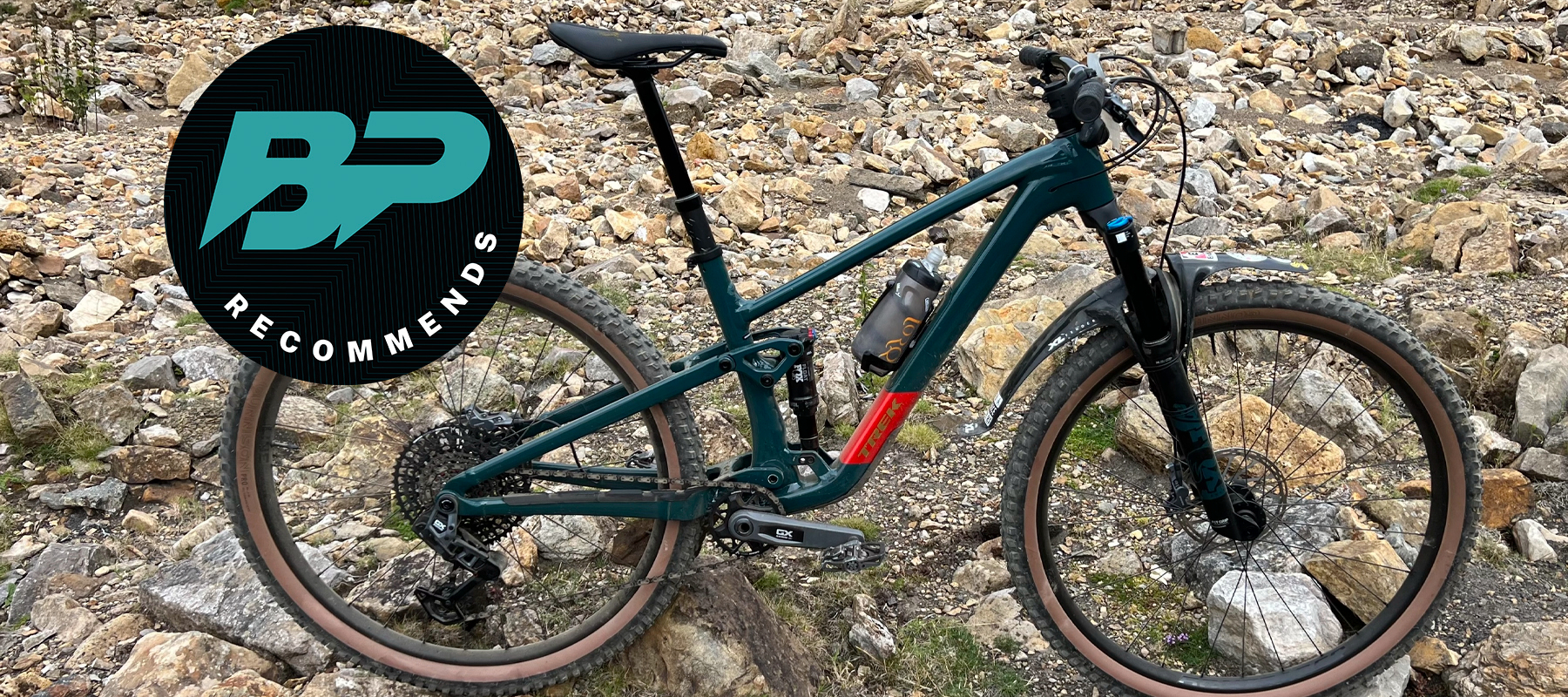Bike Perfect Verdict
Trek’s latest Top Fuel is a brilliantly balanced, super capable short-travel trail bike for all-day entertainment. However, it’s expensive and comparatively heavy, the brakes and fork are pretty basic too.
Pros
- +
Excellent keen yet confident handling balance
- +
Significantly lighter frame with more user friendly details
- +
Suspension goes from great to exceptional with some simple shock surgery
- +
Solid spec underlines increased tough trail performance
- +
Trek have a great customer service and MTB advocacy/payback reputation
Cons
- -
Heavier and more expensive than some carbon competitors
- -
Short on rear travel as supplied
- -
Fork is outclassed if you extend rear travel
- -
Brakes are adequate at best
Why trust BikePerfect
Trek’s Top Fuel has been shifting from a superlight XC racer to one of the best, hard-riding short-travel trail bikes available. The latest version drops frame mass, improves geometry and opens up more hard hitting performance potential too, making it more versatile and upgradeable than ever. Given the high price not having the fork and brakes it needs to really reap those more rad rewards is frustrating though.

Design and geometry
At first glance, Trek hasn’t done much between Gen 3 and Gen 4 of the Top Fuel but real sniffers will be able to spot a lot. For a start, the whole tube set has been remodeled to a slimmer format and the top tube dropped even lower with a corresponding super short seat tube (just 420mm on the M/L I tested) for a longer, 34.9mm diameter dropper post. Trek has ditched the Knock Block steering restrictor insert and together with the slimmer tubes saves from 150-200g on the previous frame depending on size.
The internal storage hatch entrance has been tidied up externally and internally as well so the cable trunking doesn’t get in the way and production bikes will come with a new design of BITS bag rather than the previous space-wasting wrap. There's only one bottle mount on the hatch and another accessory mount under the top tube.
Trek have kept the same suspension architecture as before, including the rear ABP (Active Braking Pivot) that revolves around the rear axle at the chain stay, seat stay junction. However they’ve now switched to two separate alloy rocker linkages driving the trunnion shock rather than a single magnesium casting. They’ve also doubled the options with the base of shock ‘Mino Link’ flip chip too so you can now change shock progression from 14% to 19% as well as shifting angles by half a degree and BB height by 6mm too.
Gen 4 is already half a degree slacker at the head than the previous Top Fuel at 65.5 - 65.9 while the seat tube is slightly more than half a degree steeper at 76.2 - 76.6. Reach is basically the same at 462 - 467mm, but Trek has introduced longer ‘proportional’ chainstay lengths on the M/L and L sizes and then longer again on the XL. Size S bikes also come with 27.5-inch wheels on both ends as standard, while the new shock chip makes adding a 27.5-inch rear wheel to create a ‘mullet/MX’ set-up an official option on other sizes.
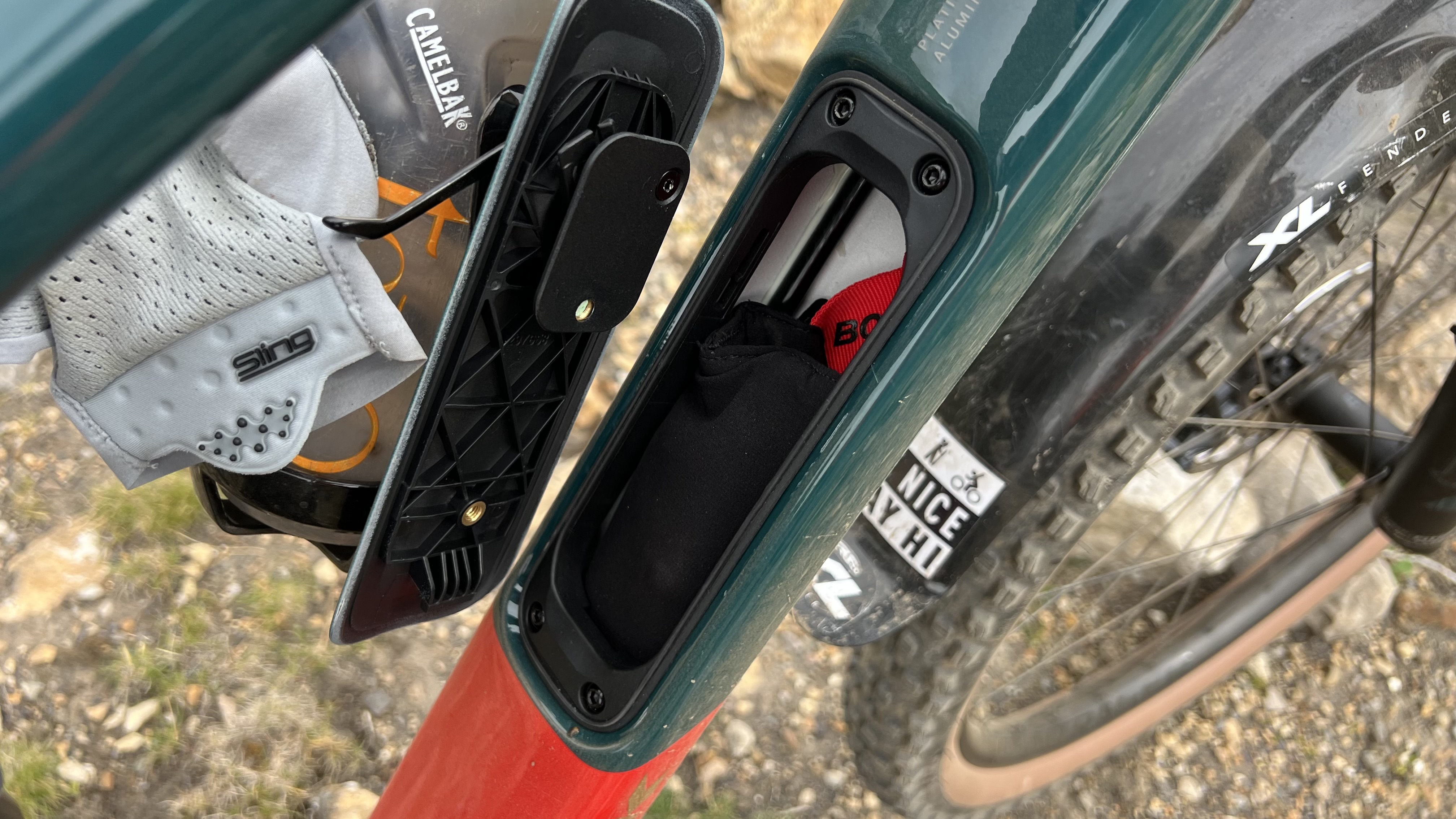
Components and build
Top Fuel got a rolling change from a 120mm SID race fork to a 130mm trail fork during Generation 3 years so no surprise it comes with a basic Fox 34 Rhythm fork in that length as standard. Most of the kit is more trail than XC too, with a 30-tooth ring on the SRAM XO chainset (it’ll take a 34 max) driving the AXS T-Type wireless Transmission.
The well-treaded Bontrager Gunnison Pro 2.4-inch tires roll on Bontrager 30mm internal width alloy rim wheels that weigh nearly 2kg reinforce a surefooted not sprightly feel too. The only XC remnants are the relatively low-rise bars on an already low front end and the SRAM Level brakes which are relatively light but also underpowered for a bike as capable as the Top Fuel. Especially if you extend the stroke of the rear shock to 55mm and take rear travel up to 130mm, but more on that later. Trek has already increased the price since launch too, but at least they invest heavily in various MTB good causes to help justify it.
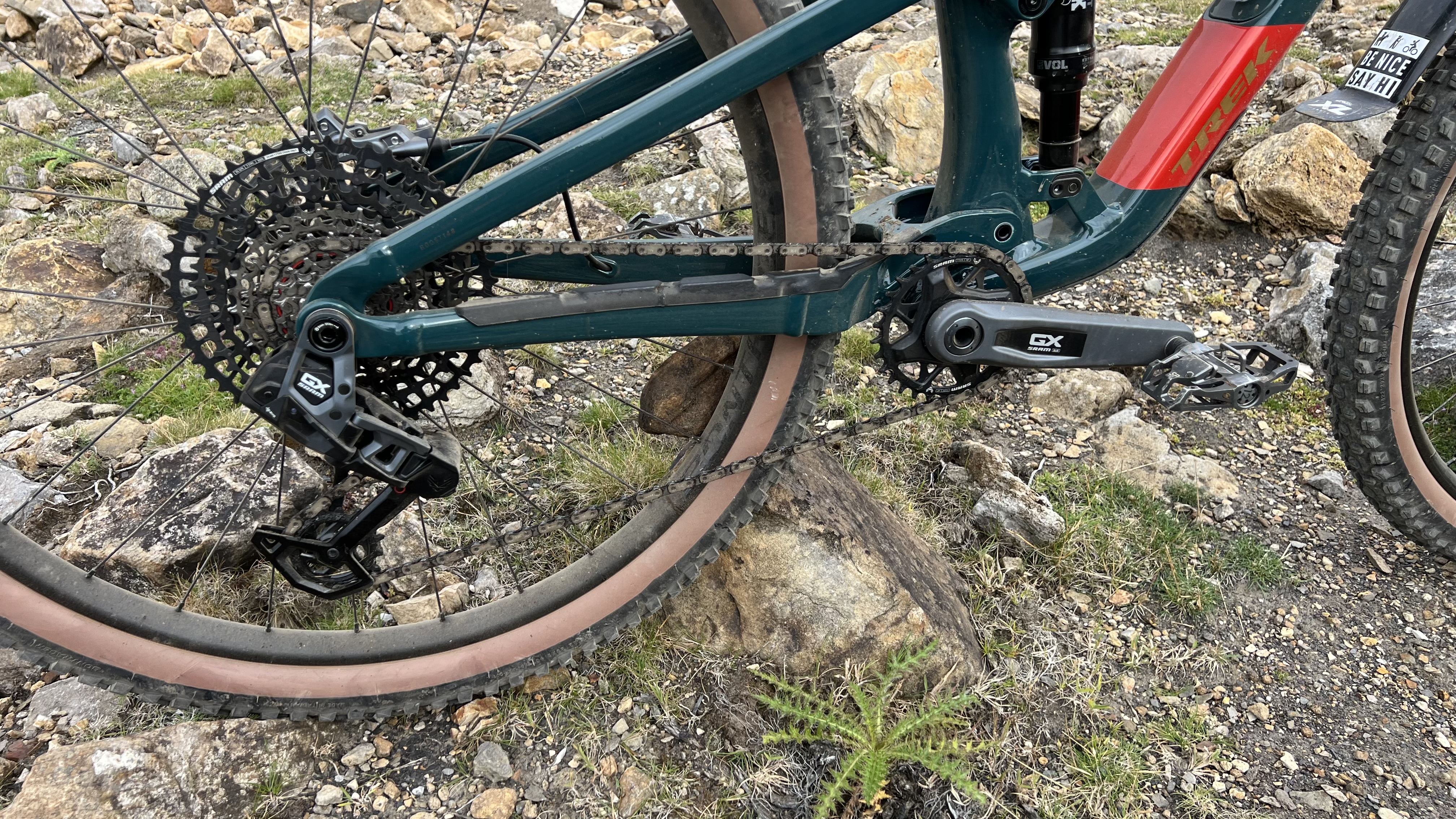
Ride, handling and performance
With a 3.7kg alloy frame and mostly sturdy spec, the Top Fuel 9 is definitely a short travel trail bike rather than a downcountry bike. However, it didn't take long to realize just how good it is on technical trails. While it’s impossible to get more than 110mm of travel out of the rear shock unless you get inside it and cut down the bottom-out bumper, the suspension quality is still excellent. Not just in the way it tracks the ground very consistently while giving plenty of mid-stroke support but also in much better big hit control than you’d expect considering you’re short-changed on stroke.
The ABP concentric rear axle pivot helps here too by reducing reaction to both pedal and braking input, letting the back wheel and suspension do their thing with quick-witted sensitivity. As a result, it feels as poised through the pedals when you’re hammering the power through as it does when you’re heels down and hanging on through random rough sections. Even when pushing hard down the notoriously tough and toothy stages of the aptly named Ard Rock Enduro the back end rarely felt out of its depth. The designed in compliance of the new frame and separate linkages means more smooth, grippy moments and less stinging, slippery ones when it matters as well. That helps the Gunnison tires stay hooked up in an impressive variety of terrain and makes the naturally stiff bars and unforgiving grips less intrusive on long days.
The basic Fox 34 exonerated itself well up front most of the time as well so I never felt I had to compromise lines because of the bike. A good job too, as the weak brakes often meant I was committed to going in hard and fast, even if I’d have liked to have backed off more into dark root sections or bigger sends.
The same ‘totally sorted’ tag applies to the handling too. The tweaked geo feels appropriate to the capacity of the suspension in terms of feedback and alertness without getting wild at high speed. The lower bars, shorter head tube and longer back end do make it harder to lift the nose to send drops on descents they combine with the steeper seat angle to give it a real focus on getting the job done on touch-and-go climbs. Despite heavy wheels, the fast-reacting freehub keeps the Top Fuel fun to hustle hard between turns and features so the numbers on the scale really don't inform how alive and aggressive it feels on the singletrack. This all confirms the natural high achiever status of the Trek, especially in fast-tech situations where you’re more likely to be on the pedals than the brakes.
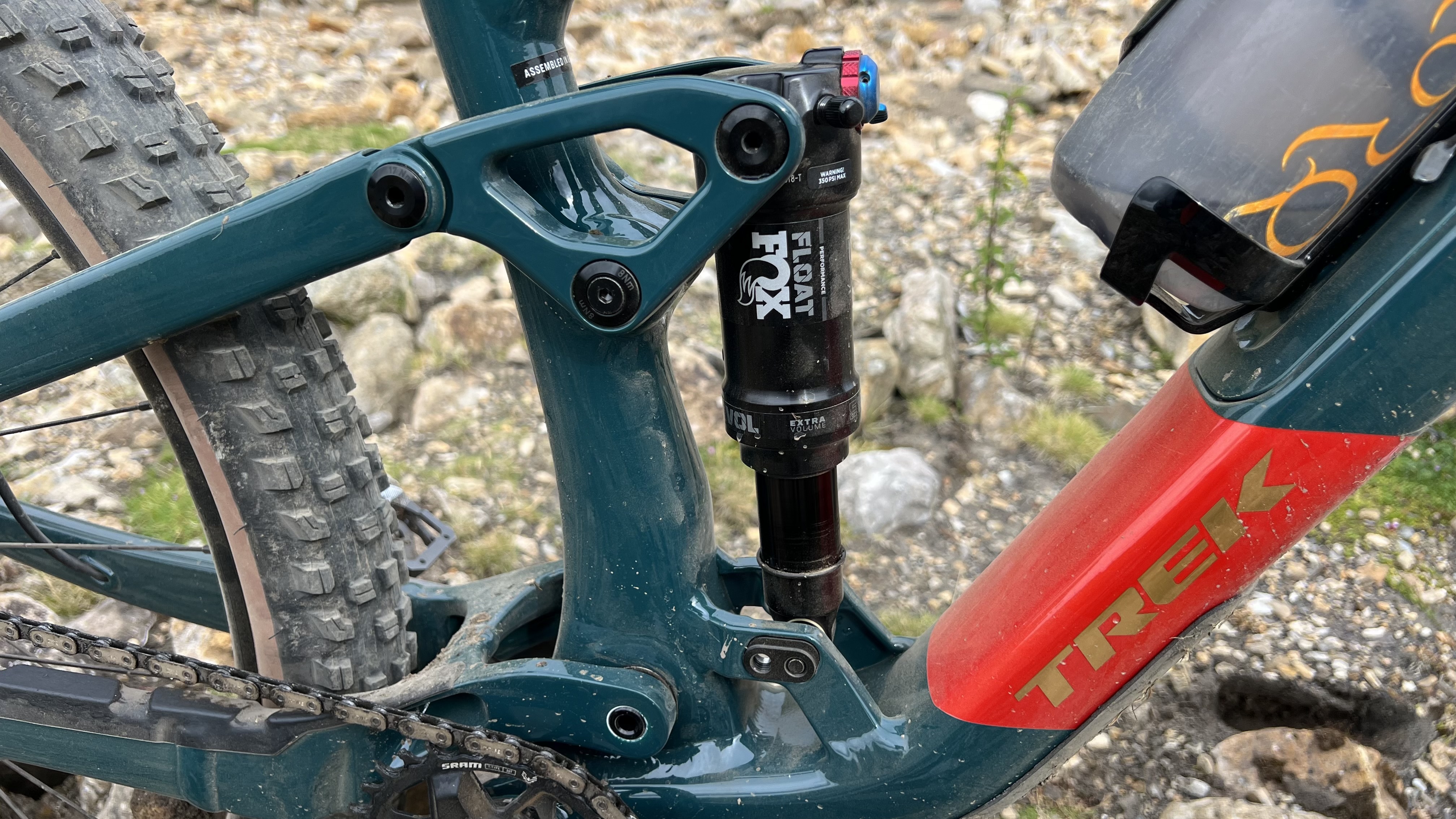
As good as the stock Top Fuel 9 is, a few minutes of shock surgery is truly transformational. Unscrewing the air can and removing the blue stroke-reducing shims (you’ll need shorter bolts for reassembly) opens up its appetite for not only bigger hits but also an even more fluid, connected feel overall. Moving it into the more progressive setting - which isn’t necessary with the stock shock setup - gives it an even better feel. Even with the relatively basic Performance grade damper that puts it right up there with the best short travel systems available such as the Evil Following, Yeti SB120 or Norco Optic. If you’re willing to invest it’ll take a piggyback air shock such as a Fox Float X or a RockShox Super Deluxe to handle the heat of flat-out descending even better too.
It’s not the shock quality that’ll need upgrading straight away if you extend the stroke though, it’s the fork and brakes. While the 130mm travel Rhythm fork is OK with the rear end at 110mm, the simple GRIP damper is obviously out of its depth when you open up the rear end to the same travel. Unfortunately, there’s no easy damper upgrade option with the 34 Rhythm, which means you’re looking at a new fork. You’ll have to at least upsize the rotors if not replace the brakes completely as well so while the basic shock mod is very cost-effective, completing the package won’t be, making the already high price more irritating.
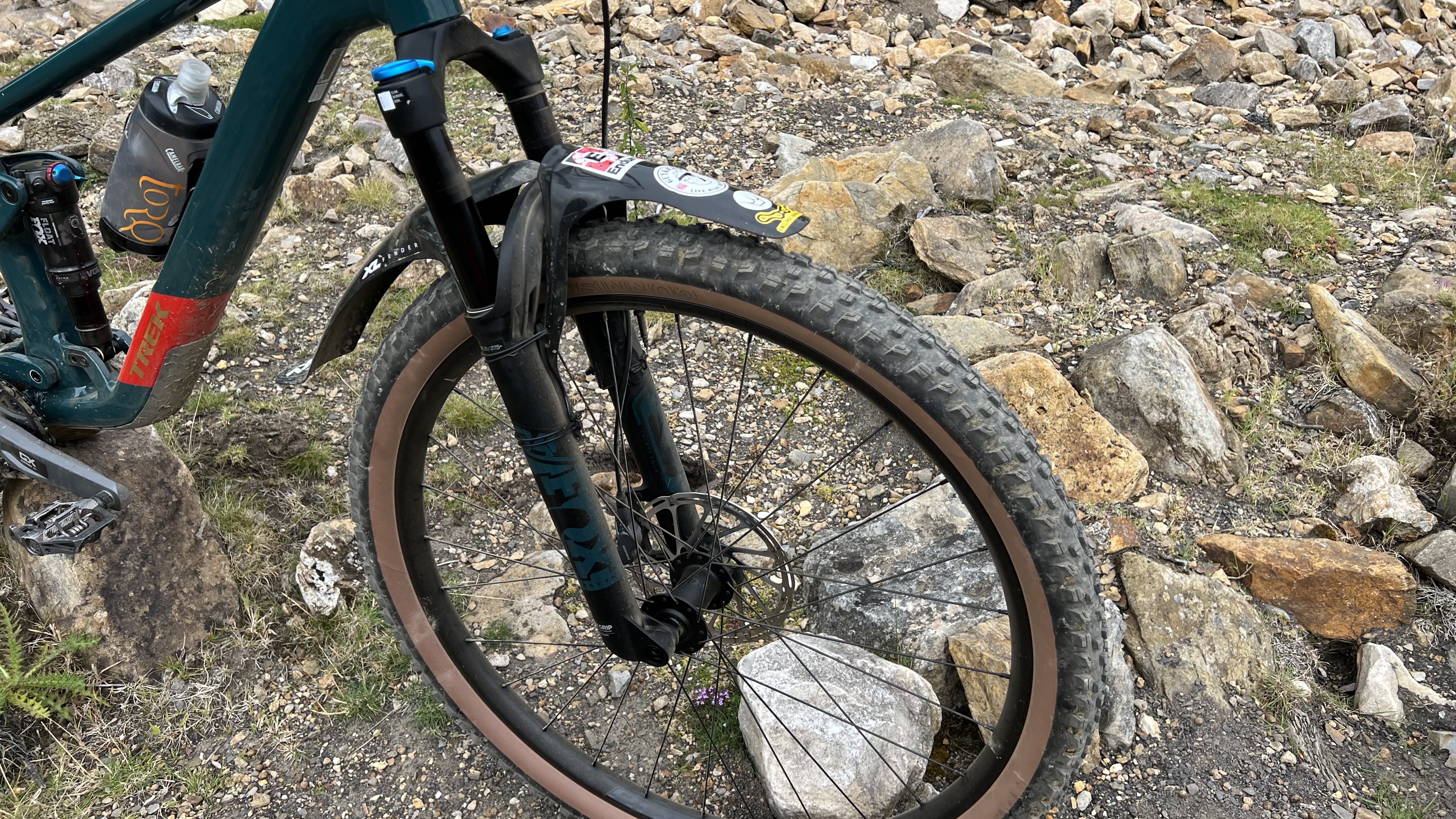
Verdict
You could ride the Top Fuel 9 totally stock and have an awesome ride as the excellent rear end, poised handling, sorted spec (apart from brakes) and practical details all create a great balance. If you think of it as a short travel trail bike, it pedals so well in the rough and the smooth it hides its chunky weight most of the time too. The result is a surefooted, smooth yet still engaging and rewarding ride for big days out or a no-holds-barred power hour in the local woods.
Even with a lighter frame than before, the alloy Top Fuel is off the pace and price for a more XC-biased life though compared to a bike like the carbon framed Specialized Epic Comp – which is 2kg lighter overall for £250 less. In that case, the Top Fuel has way more to offer in terms of opening up the rear travel to push it further into the fast and furious trail category where its weight is less of an issue. But then you’ll need a better fork and brakes to an already expensive bike, so it’s a shame Trek didn’t fit those as standard – even if it meant treading on the toes of the 150/140mm travel, but kilo heavier Fuel EX. Regardless of the confusion, it’s a testament to just how much I enjoyed riding this bike that I’ve already got the kilogram lighter carbon frame here in the workshop ready to build into what I think could be an absolute all-round winner.

Test conditions
- Surface: Everything from road to loam, roots and loose rock
- Trails: Natural XC, trail, moorland singletrack, red and black grade trails centre, off piste DH and 60km of rocky race trails at Ard Rock Enduro
- Weather: Dry, sunny, wet and all variations in between
| Attributes | Notes | Rating |
|---|---|---|
| Descending | Sorted as supplied, brilliant with more stroke | ★★★★★ |
| Climbing | Heavy weight is mitigated by excellent traction and poise | ★★★★ |
| Components and build | Mostly sorted trail spec but deserves better forks and brakes | ★★★★ |
| Value for money | Expensive but Trek are one of the leading MTB advocacy brands | ★★★ |
Tech specs: Trek Top Fuel 9 Gen 4
- Discipline: Trail
- Price: $4,799 / £4,500 / €4,799
- Head angle: 65.5º / 65.9º
- Frame material: Alpha Platinum aluminum
- Fork: Fox Rhythm 34 GRIP 140mm travel
- Shock: Fox Performance Float DPS, 2-position, 185 mm x 50 mm trunnion mount, 120mm travel (claimed)
- Size: S, M, M/L (tested), L, XL
- Weight: 14.67kg (size L actual)
- Wheel size: 29in
- Chainset: SRAM GX Eagle 30T 170mm arms with DUB bottom bracket.
- Rear mech: SRAM GX Eagle AXS T-Type
- Shifter: SRAM Eagle AXS pod
- Cassette: SRAM Eagle CS-1275 12-speed 10-52T
- Brakes: SRAM Level Bronze 4-piston hydraulic disc brakes with 180mm rotors
- Tires: Bontrager Gunnison Pro XR 29x2.4in
- Wheels: Bontrager Line Comp 30
- Bars: Bontrager Line alloy 780 x 35mm
- Stem: Bontrager Elite 45 x 35mm
- Grips: Bontrager XR Trail Comp lock-on
- Seat post: Bontrager Line Dropper, 170 mm travel
- Saddle: Bontrager Verse Short Comp steel, 145 mm width

Guy Kesteven has been working on Bike Perfect since its launch in 2019. He started writing and testing for bike mags in 1996. Since then he’s written several million words about several thousand test bikes and a ridiculous amount of riding gear. He’s also penned a handful of bike-related books and he reviews MTBs over on YouTube.
Current rides: Cervelo ZFS-5, Specialized Chisel, custom Nicolai enduro tandem, Landescape/Swallow custom gravel tandem
Height: 180cm
Weight: 69kg
